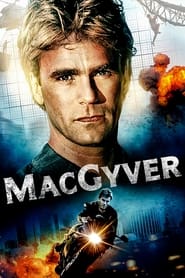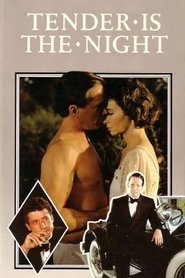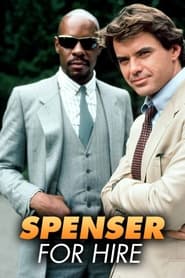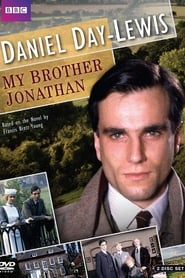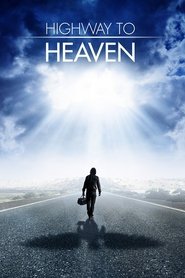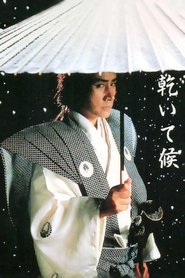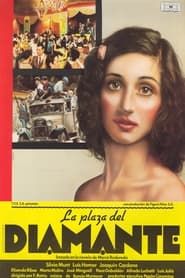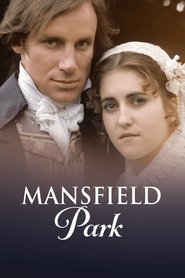New Drama TV Series on Tubi TV - Page 70
-
MacGyver
1985
MacGyver
1985
star 7.7He's everyone's favorite action hero... but he's a hero with a difference. Angus MacGyver is a secret agent whose wits are his deadliest weapon. Armed with only a knapsack filled with everyday items he picks up along the way, he improvises his way out of every peril the bad guys throw at him. Making a bomb out of chewing gum? Fixing a speeding car's breaks... while he's riding in it? Using soda pop to cook up tear gas? That's all in a day's adventures for MacGyver. He's part Boy Scout, part genius. And all hero. -
Tender Is the Night
1985
Tender Is the Night
1985
star 6.3Tender Is the Night is a 1985 television drama miniseries co-produced by Showtime, 20th Century Fox Television, BBC, and 7 Network. Based on F. Scott Fitzgerald's 1934 novel of the same name, the six-part series focuses on themes of love, ambition, mental illness, and the decline of the American Dream. 1920s, the French Riviera: wealthy expatriate Nicole Warren's mental illness strains her marriage to psychiatrist Dick. A young American actress named Rosemary Hoyt arrives and is drawn into their circle, becoming romantically involved with the older, married Dick and disrupting the fragile balance of the group. The thought of Dick possibly being attracted to another sends Nicole on an emotional downward spiral that threatens to consume them all. -
Spenser: For Hire
1985
Spenser: For Hire
1985
star 6.7Mystery and suspense series based on Robert Parker's "Spenser" novels. Spenser, a private investigator living in Boston, gets involved in a new murder mystery each episode. -
My Brother Jonathan
1985
My Brother Jonathan
1985
star 5My Brother Jonathan is a 1985 BBC five part mini-series that relates the story of an idealistic doctor, Jonathan Dakkers, in the coal country of England during the period around WW1 and a love triangle. -
Stingray
1985
Stingray
1985
star 7.2Ray is an enigmatic adventurer with no traceable past who travels from place to place fighting crime and helping people in trouble. He refuses to be paid for his services; however, those seeking his assistance must promise him a favor. -
Bleak House
1985
Bleak House
1985
star 6Bleak House is BBC television drama first broadcast in 1985. The serial was adapted by Arthur Hopcraft from Charles Dickens' novel Bleak House and it was the second adaptation by the BBC. -
The Last Place on Earth
1985
star 6.8The Last Place on Earth is a 1985 Central Television seven part serial, written by Trevor Griffiths based on the book Scott and Amundsen by Roland Huntford. The book is an exploration of the expeditions of Captain Robert F. Scott and his Norwegian rival in polar exploration, Roald Amundsen in their attempts to reach the South Pole. The series ran for seven episodes and starred a wide range of UK and Norwegian character actors as well as featuring some famous names, such as Max von Sydow, Richard Wilson, Sylvester McCoy and Pat Roach. It also featured performances early in their careers by Bill Nighy and Hugh Grant. Subsequently Huntford's book was republished under the same name. The book put forth the point of view that Amundsen's success in reaching the South Pole was abetted by much superior planning, whereas errors by Scott ultimately resulted in the death of him and his companions. -
Anna of the Five Towns
1985
Anna Tellwright lives in the Pottery District in Staffordshire with her young stepsister Agnes & father Ephraim, who is a wealthy man, but a miser. Anna attends the Methodist Church, but their strict rules & her father's thumb on everything she & Agnes do creates a longing for freedom. At 21, she inherits her grandmother's estate & is a now a wealthy young woman. -
The Pickwick Papers
1985
The Pickwick Papers
1985
star 6.3Mr Pickwick, Tupman, Winkle, Snodgrass and Sam Weller begin their travels through the England of stage-coaches and coaching inns. -
The Prisoner of Zenda
1984
star 6A kingdom's ascending heir, marked for assassination, switches identities with a lookalike, who takes his place at the coronation. When the real king is kidnapped, his followers try to find him, while the stand-in falls in love with the king's intended bride, the beautiful Princess Flavia. -
Highway to Heaven
1984
Highway to Heaven
1984
star 7.4A probationary angel is sent back to Earth to team up with an ex-cop and help people. -
Hunter
1984
Hunter
1984
star 7.1Hunter is an American police drama television series created by Frank Lupo, and starring Fred Dryer as Sgt. Rick Hunter and Stepfanie Kramer as Sgt. Dee Dee McCall, which ran on NBC from 1984 to 1991. However, Kramer left after the sixth season to pursue other acting and musical opportunities. In the seventh season, Hunter partnered with two different women officers. The titular character, Sgt. Rick Hunter, was a wily, physically imposing, and often rule-breaking homicide detective with the Los Angeles Police Department. The show's main characters, Hunter and McCall, resolve many of their cases by shooting dead the perpetrators. The show's executive producer during the first season was Stephen J. Cannell, whose company produced the series. -
A Samurai's Sorrow
1984
A Samurai's Sorrow
1984
star 10A Japanese period drama broadcast in prime-time in 1984, based on Goseki Kojima and Kazuo Koike 's manga of the same title. Kainage Mondo is a secret child of Tokugawa Yoshimune and skilled swordsman. His job is a part to test food for poison for Yoshimune. He was on a journey but he goes to Edo to see Yoshimune. The Owari han have longed for the post of shogun and try to murder Yoshimune, in order to get shogun's post. Fuki is a kunoichi of Kōka. She tries to murder Yoshimue but she comes to like Mondo and eventually starts working for Mondo and Yoshimune. Mondo protects Yoshimune's life from Owari han and other enemies. -
Robin of Sherwood
1984
Robin of Sherwood
1984
star 7.6Robin of Sherwood was a British television series, based on the legend of Robin Hood. Created by Richard Carpenter, it was produced by HTV in association with Goldcrest, and ran from 1984 to 1986 on the ITV network. In America it was retitled Robin Hood and shown on the premium cable TV channel Showtime and on PBS. The show starred Michael Praed and Jason Connery as two different incarnations of the title character. Unlike previous adaptations of the Robin Hood legend, Robin of Sherwood combined a gritty, authentic production design with elements of real-life history, 20th century fiction, and pagan myth. The series is also notable for its haunting title music by Clannad, which won a BAFTA award. -
Sherlock Holmes
1984
Sherlock Holmes
1984
star 8.1Sherlock Holmes uses his abilities to take on cases by private clients and those that the Scotland Yard are unable to solve, along with his friend Dr. Watson. -
宮本武蔵
1984
宮本武蔵
1984
-
La Plaça del Diamant
1983
La Plaça del Diamant
1983
star 5.3The life of a young woman in Barcelona during the Spanish Civil War and its aftermath. This a Television version, in a 4-episode miniseries format, of the film of the same name, based on the novel by Mercè Rodoreda. -
Kennedy
1983
Kennedy
1983
star 6Kennedy is a five-hour miniseries written by Reg Gadney and directed by Jim Goddard. The miniseries was produced by Central Independent Television and originally aired in the United States starting on 20 November 1983 around the time of the 20th anniversary of the Kennedy assassination. The TV miniseries was a biography of the 1961-1963 presidency of John F. Kennedy. The mini-series stars Martin Sheen as President John F. Kennedy, John Shea as Robert F. Kennedy, Blair Brown as Jacqueline Kennedy, E.G. Marshall as Joseph P. Kennedy, Vincent Gardenia as J. Edgar Hoover and Kelsey Grammer as Stephen Smith amongst many others. The series was broadcast on NBC, and was also sold to 50 Countries, with 27 of them broadcasting the series simultaneous. The series was nominated for 3 Golden Globes and 4 BAFTA, and won Baftas for Best Drama Series and Best Make Up. -
Mansfield Park
1983
Mansfield Park
1983
star 5.8Mansfield Park is a British six-part television drama serial based on Jane Austen's 1814 novel of the same name. Produced by the BBC and adapted by Kenneth Taylor, it stars Sylvestra Le Touzel as Fanny Price, who is sent to live with her wealthy relatives, the Bertrams, where she is treated poorly by most except her cousin Edmund. Her life is complicated by the arrival of the worldly Mary and Henry Crawford. -
Jane Eyre
1983
Jane Eyre
1983
star 7.1A young governess falls in love with her mysterious employer, but a terrible secret puts their happiness at risk.
 Netflix
Netflix
 Amazon Prime Video
Amazon Prime Video
 Apple iTunes
Apple iTunes
 Apple TV Plus
Apple TV Plus
 Disney Plus
Disney Plus
 Google Play Movies
Google Play Movies
 Paramount Plus
Paramount Plus
 Hulu
Hulu
 HBO Max
HBO Max
 YouTube
YouTube
 fuboTV
fuboTV
 Peacock
Peacock
 Peacock Premium
Peacock Premium
 Amazon Video
Amazon Video
 The Roku Channel
The Roku Channel
 AMC+
AMC+
 Kocowa
Kocowa
 Hoopla
Hoopla
 The CW
The CW
 Vudu
Vudu
 Starz
Starz
 Showtime
Showtime
 PBS
PBS
 Pantaflix
Pantaflix
 FXNow
FXNow
 Tubi TV
Tubi TV
 Kanopy
Kanopy
 Comedy Central
Comedy Central
 Crunchyroll
Crunchyroll
 Microsoft Store
Microsoft Store
 Redbox
Redbox
 Sun Nxt
Sun Nxt
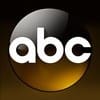 ABC
ABC
 DIRECTV
DIRECTV
 Crackle
Crackle
 Fandor
Fandor
 Plex
Plex
